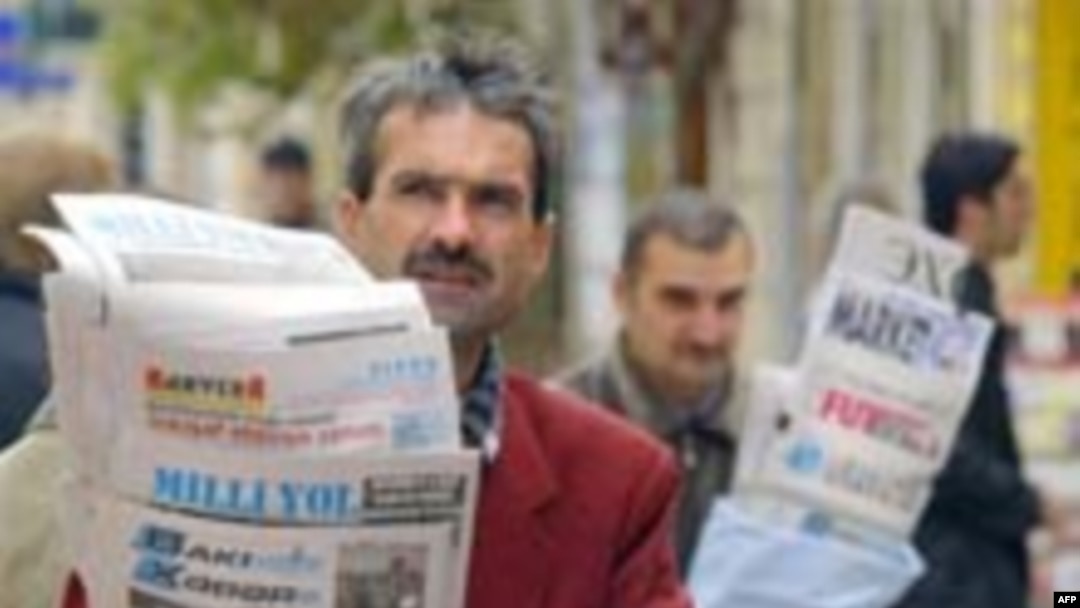But that improved access to free airtime was not complemented either by increased objectivity on the part of the state-controlled media in their coverage of the opposition, or by a reduction in the enormous quantitative discrepancy between the coverage afforded to the ruling Yeni Azerbaycan (New Azerbaijan) party as compared to the opposition.
The revised election law stipulated that only parties or blocs that nominated more than 60 candidates could qualify for free airtime. Those that did were each to receive a total of 4 1/2 hours of free exposure -- parceled out into 90 minute allotments on state television, state radio, and the new Public Television channel, which began broadcasting in late August.
Only four parties or blocs met that criteria: Yeni Azerbaycan, the Azadliq and Yeni Siyaset opposition election blocs, and the opposition Liberal Party. In line with a 10 September ruling by the Central Election Commission (MSK), each of the four parties/blocs was allowed a daily "slot" six times weekly, Mondays through Saturdays.
That commitment was, by and large, honored, although MSK secretary Vidadi Maxmudov claimed in late September that state television and Public Television were offering selected candidates additional unpaid airtime. The sole major infraction registered was the suspension by State Television of live election broadcasting, both paid and unpaid, by Azadliq on 17 October -- the evening of former parliament speaker Rasul Quliyev's abortive attempt to return to Azerbaijan from exile to participate in the election as an Azadliq candidate. That ban was lifted on 20 October after international organizations protested, according to zerkalo.az on 21 October.
In addition, all candidates were entitled to purchase airtime on State Television, Public Television, or on private television channels. But the Central Election Commission (MSK) set limits on both the amount of free and paid airtime state television and Public Television could broadcast per week: 135 minutes per week free airtime and 270 minutes paid airtime, and not more than 45 minutes paid airtime on any given day.
Each registered candidate was entitled to 1 million manats ($217.72) from the state budget to cover the costs of his/her media campaign, but just one minute of paid television advertising cost between $420-$850 on the private television station ANS, between $295-$590 on Azerbaijan TV, and between $420-$640 on the privately owned Space TV, according to zerkalo.az on 9 September, citing mediaforum.az.
Public Television General Director Ismail Omarov announced on 5 September that his channel's rates were to be set lower than those on private channels, but he did not say what the tariff would be. The maximum a candidate could spend on campaign advertising was 412.5 million manats ($88,000), MSK spokesman Azer Sariyev told echo-az.com of 26 August.
But paradoxically, in trying to treat all candidates equally, some television channels ended up inadvertently infringing on the legal limit on the maximum amount of election-related programming that could be aired each week, zerkalo.az reported on 27 October. The National Television and Radio Council had to caution state television that it was violating the election law by broadcasting between two and three hours of paid election-related programming per night.
Such efforts to provide all eligible candidates with the maximum airtime to which they were entitled, and which they could afford, are laudable. But they may have had a possibly unintended negative effect: even the most politically engaged viewers are likely to lose interest after several weeks of election-related programming. That is not, however, to deny the importance of maximum coverage -- given that the electronic media, rather than newspapers, continue to be the primary source of information for most of Azerbaijan's population.
That public reliance on television for information renders all the more crucial the need for objectivity and balance. A Code of Conduct for media coverage of elections prepared by the Council of Europe and intended to promote those qualities was adopted in July, but monitoring of some 40-50 media outlets -- both electronic and print -- during the election campaign showed that, as in previous elections, several television channels continued to give disproportionately extensive and almost exclusively favorable coverage to candidates from the ruling Yeni Azerbaycan party, while their coverage of opposition parties tended to be cursory and largely negative.
That monitoring identified Azerbaijan State Television as the main offender, followed Lider and Space television, both of which are privately owned, reportedly by persons close to the ruling elite. Public Television proved to be less tendentious and more objective than either of those latter three channels, but was still far from entirely free of bias.


